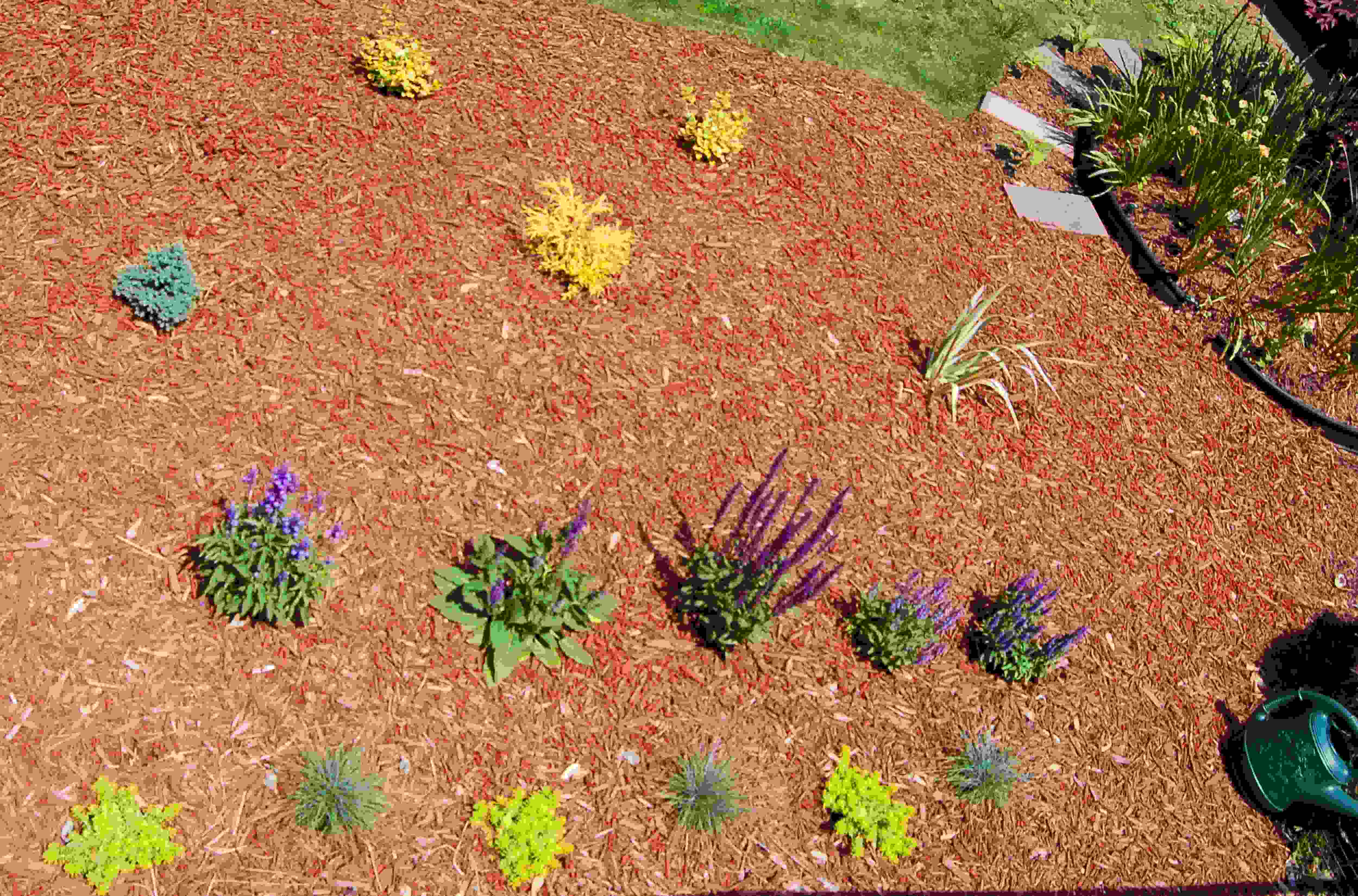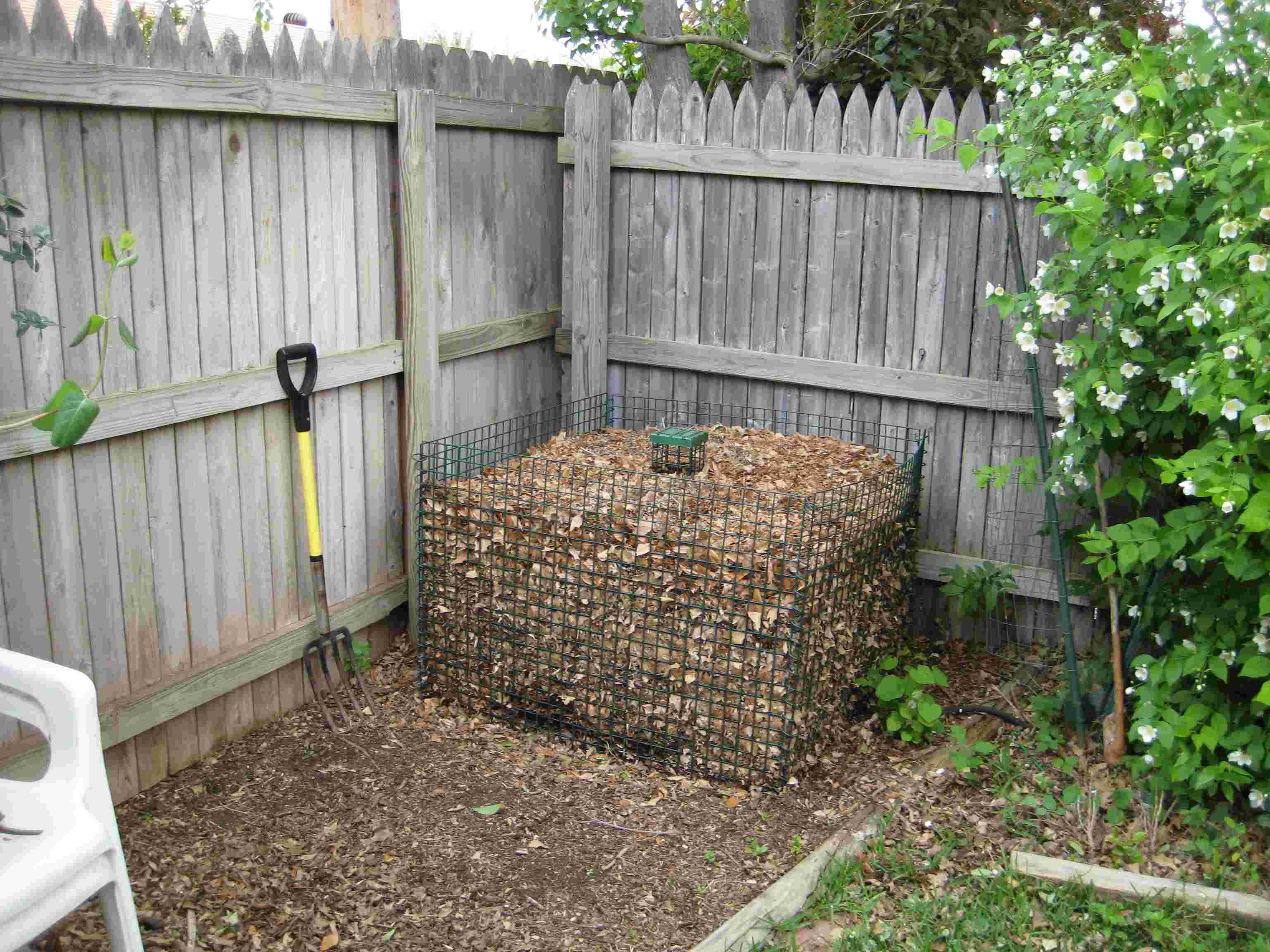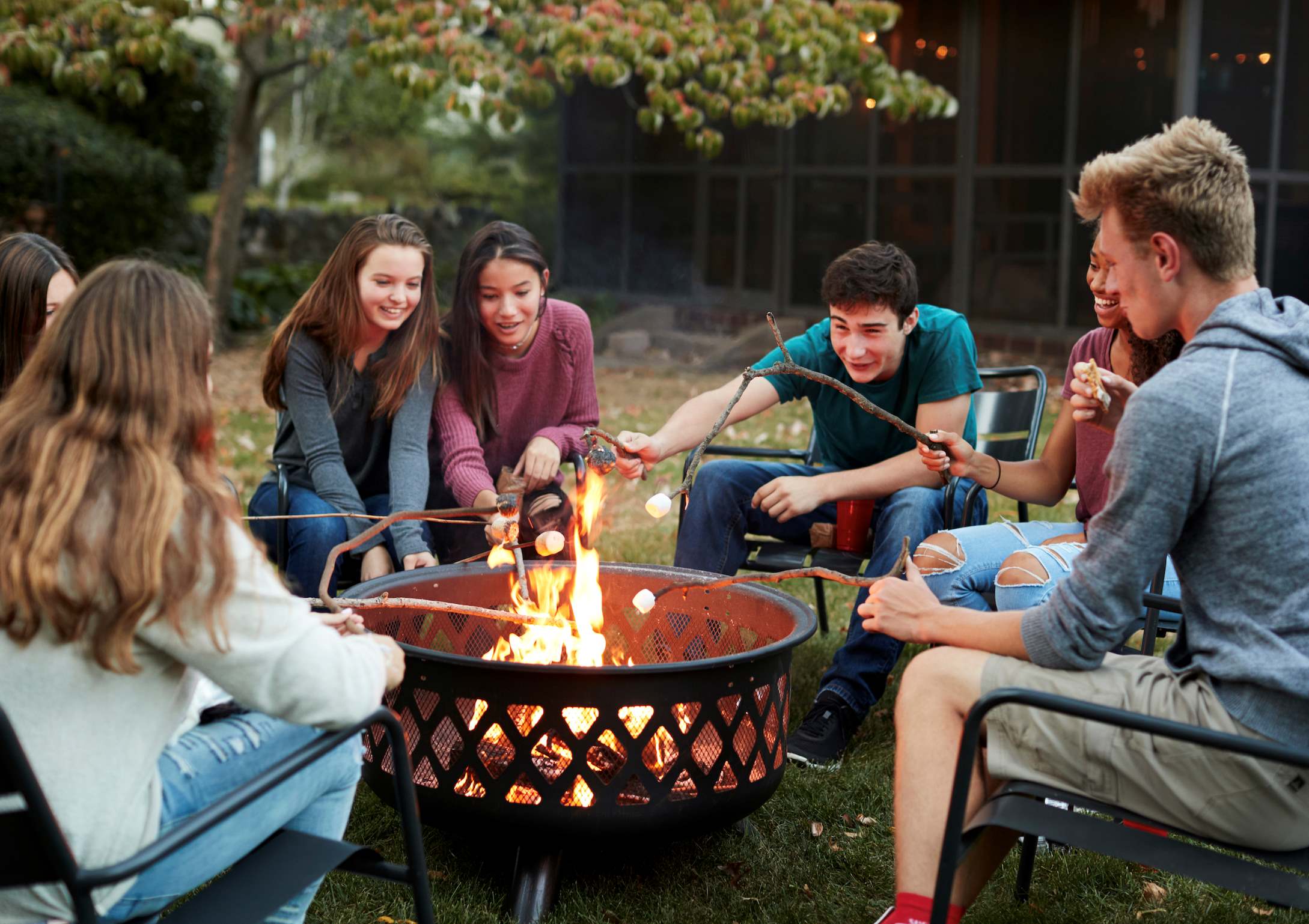Home>Garden Design>Landscape Design>How To Group Plants In Your Landscaping


Landscape Design
How To Group Plants In Your Landscaping
Modified: January 22, 2024
Discover how to effectively group plants in your landscape design to create stunning and harmonious gardens. Learn essential tips and techniques for successful landscaping.
(Many of the links in this article redirect to a specific reviewed product. Your purchase of these products through affiliate links helps to generate commission for Chicagolandgardening.com, at no extra cost. Learn more)
Table of Contents
- Introduction
- Step 1: Determining Plant Groupings
- Step 2: Considering Plant Characteristics
- Step 3: Creating Visual Balance
- Step 4: Selecting Complementary Plantings
- Step 5: Ensuring Proper Spacing and Growth Requirements
- Step 6: Implementing Group Plantings in Different Landscaping Styles
- Step 7: Maintaining and Caring for Grouped Plants
- Conclusion
Introduction
Welcome to the world of landscape design, where the artistry of nature meets human creativity. In this guide, we will explore the concept of grouping plants in landscaping and delve into the techniques for achieving stunning visual effects.
Grouping plants is an essential aspect of landscape design that involves arranging plants in clusters based on their similar characteristics and aesthetic qualities. By carefully curating these groupings, you can achieve a harmonious and cohesive look in your garden or outdoor space.
When done correctly, grouping plants can create a visually striking landscape that adds depth, texture, and interest to your surroundings. It allows for the creation of focal points and the establishment of distinct areas within your garden. Furthermore, grouping plants can enhance the overall health and growth of the plants themselves, as they benefit from the shared environment and symbiotic relationships.
Whether you are a seasoned landscape designer or a gardening enthusiast looking to elevate your outdoor space, this guide will provide you with the knowledge and inspiration you need to create stunning plant groupings that will transform your landscape.
Throughout this article, we will explore the step-by-step process of grouping plants, taking into account their characteristics, visual balance, complementary pairings, spacing, and growth requirements. We will also delve into different landscaping styles and how to incorporate group plantings in each. Lastly, we will touch on the maintenance and care involved in nurturing and sustaining these beautifully arranged plant groupings.
So, let’s dive in and discover the art of group plantings in landscaping. Get ready to unleash your creativity and breathe new life into your outdoor space!
Step 1: Determining Plant Groupings
The first step in creating visually appealing plant groupings is to determine how you want to categorize and arrange your plants. There are various factors to consider when determining plant groupings, such as their growth habits, color schemes, textures, and functional purposes.
Start by analyzing the space you have available and identifying any focal points or areas that you want to draw attention to. Consider the overall theme or style you want to achieve in your landscape. Do you prefer a formal garden with symmetrical arrangements or a more informal and naturalistic design?
Once you have a clear vision, begin selecting plants that fit into these different groupings. For example, you might create a grouping of tall, upright plants to provide a vertical element or a cluster of low-growing, spreading plants for ground cover. You can also create color-themed groupings, such as a vibrant mix of warm-colored flowers or a soothing palette of cool-toned foliage.
When determining plant groupings, it’s important to consider the growth habits of each plant. Some plants may spread and take up more space over time, while others may remain compact. Ensure that you choose plants with similar growth rates and habits to maintain the overall balance and prevent overcrowding.
In addition to growth habits, consider the cultural requirements of each plant. Make sure that they have similar sunlight, soil, and water needs to ensure their optimal growth and health. Grouping plants with similar needs together will make it easier for you to provide the necessary care and maintenance.
It’s also essential to consider the functional purposes of the plant groupings. Do you want to create privacy, attract pollinators, or provide shade? Incorporating plants with specific functions into your groupings can add both beauty and practicality to your landscape.
By carefully determining plant groupings based on growth habits, colors, textures, and functional purposes, you can ensure that your landscape design is visually captivating and harmonious. This step lays the foundation for the rest of the process, guiding your plant selection and arrangement as you move forward in creating stunning group plantings.
Step 2: Considering Plant Characteristics
Once you have determined the basic groupings for your plants, it’s time to dive deeper into considering their individual characteristics. Each plant has unique qualities that contribute to the overall aesthetic and functionality of the group plantings.
One important characteristic to consider is the foliage of the plants. Think about the shape, size, texture, and color of the leaves. Incorporate a mix of different foliage types to create visual interest and contrast within your groupings. For example, you can combine plants with large, broad leaves with those that have fine, feathery foliage. Mixing different leaf colors, such as variegated or burgundy foliage, can also add interest to the grouping.
In addition to foliage, consider the overall form and structure of each plant. Some plants have an upright, columnar growth habit, while others may have a trailing or mounding form. By combining plants with different growth habits, you can create a dynamic and visually appealing composition. Consider using taller plants in the center or back of the grouping and cascading or spreading plants towards the front to create depth and dimension.
Another important consideration is the bloom time and flower characteristics of the plants. Determine if you want to create groupings that will have continuous blooms throughout the season or if you prefer specific plants to be the focal point during certain times. Select plants with complementary colors and flower shapes to create a cohesive and pleasing arrangement. It’s also beneficial to choose plants with varying heights to add vertical interest.
The scent of the plants can also play a role in the overall sensory experience of your landscape. Consider incorporating fragrant plants into your groupings to create a pleasant aroma in your outdoor space. This can be particularly enjoyable in areas where you frequently spend time, such as near seating areas or garden paths.
Lastly, think about the overall maintenance requirements of each plant. Some plants may require more frequent pruning or fertilization, while others may be more low-maintenance. By grouping plants with similar maintenance needs, you can streamline your garden care routine and ensure that each plant receives the necessary attention.
Considering the plant characteristics during the grouping process will help you create visually enticing compositions that showcase the unique qualities of each plant. By carefully selecting and arranging plants based on their foliage, form, bloom time, scent, and maintenance requirements, you can achieve group plantings that are not only visually stunning but also harmonious and functional in your landscape.
Step 3: Creating Visual Balance
In landscaping, visual balance is essential for creating a harmonious and pleasing arrangement of group plantings. It involves distributing the visual weight of the plants evenly throughout the space, considering factors such as color, height, and texture.
When creating visual balance, consider the color scheme of your group plantings. Choose colors that complement and harmonize with each other. You can create balance by using a mix of warm and cool colors or by incorporating plants with different shades of the same color. Avoid clustering too many plants with intense or vibrant colors together, as they can overwhelm the overall composition. Instead, intersperse them with more subdued or neutral tones for a balanced and visually appealing arrangement.
Height is another important element to consider. Varying the heights of the plants in your groupings can add depth and interest to the landscape. Place taller plants towards the back or center of the grouping and shorter plants towards the front. This creates a natural progression and helps distribute the visual weight evenly throughout the space. Additionally, consider the overall height of the group planting in relation to its surrounding environment, ensuring that it complements the scale of your outdoor space.
Texture also plays a role in creating visual balance. Different plant textures, such as smooth, shiny leaves or rough, textured foliage, can add depth and dimension to the grouping. Combine plants with contrasting textures to create visual interest. For example, pair plants with fine, delicate foliage with those that have bold, coarse leaves.
Spacing is key in achieving visual balance. Avoid overcrowding the plants, as it can create a cluttered and overwhelming appearance. Allow enough space for each plant to grow and showcase its unique characteristics. Consider the mature size of the plants when determining the spacing between them and ensure that they have sufficient room to thrive without competing for resources.
Finally, consider the overall shape and structure of the group plantings. Create a sense of symmetry or balance by mirroring the shapes and forms of the plants on either side of the grouping. Alternatively, you can create a more informal and naturalistic balance by arranging the plants in a seemingly random but visually pleasing way.
By carefully considering color, height, texture, spacing, and shape, you can achieve visual balance in your group plantings. Creating a balanced composition will not only enhance the aesthetic appeal of your landscape but also create a sense of tranquility and order.
Step 4: Selecting Complementary Plantings
Selecting complementary plantings is an important step in creating visually appealing groupings in your landscape. By choosing plants that work well together in terms of color, texture, and form, you can create a cohesive and harmonious composition that enhances the overall beauty of your outdoor space.
One key aspect to consider when selecting complementary plantings is color. Choose plants with colors that harmonize or contrast with each other to create visual interest. Complementary colors, such as purples and yellows or blues and oranges, can create an eye-catching display. Monochromatic schemes, using varying shades of the same color, can also be visually striking. Consider the color wheel when making your plant selections to ensure a pleasing color combination.
Texture is another important factor when selecting complementary plantings. Mixing different leaf textures, such as fine and feathery or bold and coarse, can add depth and dimension to your groupings. Consider the textures of the flowers or fruits as well. Smooth petals or spiky seed heads can provide interesting contrasts within the composition.
Form and structure of the plants also play a role in creating complementary groupings. For example, combining plants with upright growth habits and those with more cascading or spreading forms can create a visually pleasing contrast. Mix plants with different shapes, such as those with rounded or columnar forms, to add variety and balance.
Consider the overall size and scale of the plants when selecting complementary plantings. Ensure that the sizes of the plants are proportional to the space and surrounding elements. Avoid placing large, dominating plants next to smaller delicate ones, as this can create an imbalance in the groupings.
Think about the seasonal interest of the plants as well. Select plants that have different bloom times, ensuring that there will be a continuous display of color throughout the seasons. Choose plants with interesting foliage, such as those with variegated or textured leaves, to add visual interest even when they are not in bloom.
Remember to also incorporate plants with different heights to create a dynamic composition. Taller plants can serve as focal points or provide vertical interest, while shorter plants can be used to fill in gaps and create a layered effect.
By carefully selecting complementary plantings based on color, texture, form, size, and seasonal interest, you can create groupings that are visually appealing and harmonious. Creating a well-balanced and cohesive composition will elevate the overall beauty and impact of your landscape.
Step 5: Ensuring Proper Spacing and Growth Requirements
Ensuring proper spacing and growth requirements is crucial for the health and vitality of your group plantings. Each plant has specific needs when it comes to spacing, soil conditions, sunlight, and water requirements, and understanding and implementing these requirements will help your plants thrive and flourish.
The first consideration is spacing. When planting your groupings, make sure to leave adequate space between each plant to accommodate their mature size. Overcrowding can restrict air circulation and promote disease, as well as hinder the growth and development of individual plants. Consider the recommended spacing guidelines for each plant and allow for future growth.
Understanding the growth habits of your plants is essential when planning the layout of your group plantings. Some plants have a spreading habit and may require more space to grow horizontally, while others have an upright form and may require less space. By considering the growth habits of your plants, you can strategically position them to achieve a balanced look and prevent overcrowding.
Another important factor to consider is soil conditions. Different plants have different soil preferences, and it’s important to ensure that each plant’s soil requirements are met. Some plants thrive in well-draining soils, while others prefer moist or even boggy conditions. Understand the soil needs of each plant in your groupings and ensure that the soil in that particular area is suitable for their growth.
Sunlight is also a critical factor in ensuring the proper growth and development of your plants. Some plants thrive in full sun, while others prefer partial shade or even full shade. Identify the sunlight requirements of each plant in your groupings and position them accordingly to ensure they receive the appropriate amount of light. Placing shade-loving plants in direct sunlight or sun-loving plants in shaded areas can lead to stunted growth or even plant death.
Watering is essential to the health of your plants, and understanding their water requirements is crucial. Some plants prefer consistently moist soil, while others can tolerate periods of dryness. Make sure to provide adequate water to your plants according to their needs, considering factors such as rainfall, soil drainage, and climate. Overwatering or underwatering can have detrimental effects on the growth and health of your group plantings.
Regular monitoring and maintenance are necessary to ensure that your group plantings continue to thrive. Keep an eye out for signs of nutrient deficiencies, disease, or pests, and take appropriate action to address any issues. Prune and trim your plants as needed to maintain their shape and size, and remove any dead or damaged foliage to promote healthy growth.
By ensuring proper spacing and growth requirements, you will provide the optimal conditions for your group plantings to flourish. Understanding the unique needs of each plant in terms of spacing, soil conditions, sunlight, and water requirements will result in healthy, vibrant, and long-lasting groupings that will enhance the beauty of your landscape.
Step 6: Implementing Group Plantings in Different Landscaping Styles
Group plantings can be applied to various landscaping styles, allowing you to create distinctive looks and atmospheres in your outdoor space. Whether you prefer a formal, contemporary, or naturalistic style, implementing group plantings can enhance the overall aesthetic and theme of your landscape.
In a formal landscaping style, symmetry and balance are key. Group plantings can be used to create structured and geometric designs. Consider using plants with a uniform and controlled growth habit, such as clipped hedges or topiaries, to achieve a precise and polished look. Employing plant groupings with identical or mirror-image arrangements can add a sense of order and elegance to the formal landscape.
A contemporary landscaping style embraces clean lines, minimalism, and bold visual impact. Group plantings in this style focus on creating striking focal points and contrasts. Incorporate plants with sculptural or architectural features, such as ornamental grasses or plants with unique leaf shapes. Use groupings of plants with similar height, texture, or color to create a sense of cohesion and drama in the contemporary landscape.
A naturalistic landscaping style aims to mimic the beauty and randomness of the natural world. Group plantings in this style focus on creating a harmonious and organic composition. Use a mix of native plants, wildflowers, and grasses to achieve a more spontaneous and relaxed look. Arrange the plants in a seemingly random but visually pleasing way, allowing them to grow and intertwine naturally. This style of group plantings can create a serene and low-maintenance landscape.
In a cottage garden style, the emphasis is on an abundance of colors, textures, and fragrance. Group plantings can be used to create a charming, romantic, and slightly overgrown appearance. Create groupings of flowers with varying heights, colors, and textures to achieve a cottage garden’s quintessential lushness. Incorporate climbing plants, such as roses or vines, to add vertical interest and a sense of enchantment. This style of group plantings evokes a nostalgic and inviting atmosphere in the garden.
Group plantings can also be adapted to fit specific themes or concepts, such as a Mediterranean garden, Japanese Zen garden, or tropical oasis. Consider the key elements and plants associated with each theme and arrange them accordingly. Incorporating groupings of plants that thrive in specific climates or evoke a particular mood will help create an authentic and immersive experience in your garden.
When implementing group plantings in different landscaping styles, it’s important to consider the overall vision and theme of your landscape. Choose plants and arrangements that harmonize with the style, focusing on creating a cohesive and visually stunning composition. Whether you prefer a formal, contemporary, naturalistic, or themed landscape, group plantings can elevate the design and bring your desired style to life.
Step 7: Maintaining and Caring for Grouped Plants
Once you have created your stunning group plantings, it’s important to maintain and care for them to ensure their long-term health and beauty. Proper maintenance practices will help your group plantings thrive and continue to enhance the overall aesthetic of your landscape.
Regular watering is essential to keep your plants hydrated, especially during dry periods. Monitor the moisture levels of the soil and adjust your watering schedule accordingly. To prevent water runoff and promote deeper root growth, water slowly and deeply at the base of the plants. Consider using mulch around the plants to help retain soil moisture and control weed growth.
Pruning and trimming your plants on a regular basis will help maintain their shape and size, promote healthy growth, and prevent any overcrowding or competition for resources. Remove any dead, damaged, or diseased branches or foliage as soon as you notice them. Pruning will also improve air circulation and minimize the risk of disease spread among the group plantings.
Fertilizing your plants is important to ensure that they receive the necessary nutrients for healthy growth and flowering. Use a balanced fertilizer or one that is specific to the needs of your plants. Follow the recommended instructions and timing for fertilizing, as over-fertilizing can lead to excessive growth or nutrient imbalances. Regular fertilization will help your group plantings maintain their vigor and vitality.
Monitor your group plantings for any signs of pests or diseases. Early detection and intervention are crucial in preventing the spread of pests or the development of diseases. Stay vigilant and inspect your plants regularly. If you notice any signs of pest infestation or disease, take appropriate action to control and manage the issue. This may include using organic pest control methods or seeking professional advice if needed.
Regularly remove weeds from your group plantings to prevent them from competing with your plants for nutrients and water. Weeds can also detract from the overall visual appeal of your groupings. Use manual removal or mulching to suppress weed growth, and be careful when using herbicides to ensure that they won’t harm your desired plants.
During the different seasons, make adjustments to your group plantings as needed. Some plants may need to be divided or transplanted to maintain optimal spacing and growth. In colder climates, protect sensitive plants from harsh winter conditions with proper mulching, covering, or relocating them to a more sheltered area.
Lastly, ongoing observation and care are essential for successful maintenance of your group plantings. Stay connected with your garden, observe how your plants are responding to the current conditions, and make adjustments accordingly. By being attentive and proactive, you can address any issues that arise and ensure the long-term health and beauty of your group plantings.
By following these maintenance and care practices, you can keep your group plantings thriving and looking their best. Regular watering, pruning, fertilizing, pest control, and seasonal adjustments will help maintain the health, vigor, and visual impact of your group plantings, allowing them to continue enhancing the beauty of your landscape for years to come.
Conclusion
Congratulations! You have now learned the step-by-step process of creating stunning group plantings in your landscape. By determining plant groupings, considering plant characteristics, creating visual balance, selecting complementary plantings, ensuring proper spacing and growth requirements, implementing them in different landscaping styles, and maintaining and caring for them, you can transform your outdoor space into a breathtaking oasis.
Group plantings offer a multitude of benefits. They add depth, texture, and visual interest to your landscape, create focal points and distinct areas, and enhance the overall aesthetic appeal of your outdoor space. Not only do they provide a harmonious and cohesive look, but they also promote the growth and health of the plants themselves through shared environments and symbiotic relationships.
Remember to infuse your creativity into the grouping process, combining plants with complementary characteristics and arranging them in visually appealing ways. Consider the style and theme of your landscape, whether it’s formal, contemporary, naturalistic, or themed, and select plants that align with that vision.
Proper care and maintenance are key to ensuring the long-term success of your group plantings. Regular watering, pruning, fertilizing, pest control, and seasonal adjustments will keep your plants healthy, vibrant, and flourishing year after year.
So, what are you waiting for? Grab your gardening tools, unleash your creativity, and get started on creating magnificent group plantings in your landscape. Take the time to plan, select plants with care, and maintain them diligently. The stunning results will be well worth the effort.
Enjoy the beauty and tranquility that your group plantings will bring to your outdoor space. Whether you’re enjoying a peaceful retreat in a naturalistic garden, marveling at the geometric precision of a formal landscape, or mesmerized by the bold visuals of a contemporary design, your group plantings will be a testament to your creativity and love for nature.
Embrace the artistry of landscape design and let your group plantings captivate and inspire all who behold them. Happy gardening!










